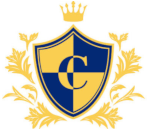Years ago, kindergarten was seen as completely unnecessary. Children simply started primary school when they were six. More recently, primary schools have developed their own kindergartens (anaokulu). Turkish kindergartens prepare students for regular school days, and teach some basic lessons. Like older children kindergarten students are required to wear uniforms.
Kindergarten usually costs around YTL 800 per year – the fee offsets the cost of uniforms, foods, and other supplies.
Primary school
At 6, children begin compulsory education regardless of whether they have attended kindergarten or not. The Turkish school year runs from September to June, with a three-month vacation in summer and numerous holidays for Muslim feasts and religious observances.
Primary students´ uniforms are plain blue up until the age of 11, at which point students switch to uniforms specific to their school. Parents must purchase their students´ uniforms themselves, though they are usually available in local shops.
Primary students are taught the basics of most subjects, and even learn foreign languages. English is the most commonly taught, though French and German are often taught as well. Native-speaking foreign language teachers are a luxury uncommon to most public schools, however.
Public primary schools are plagued with major weaknesses, however. Traditionally, the curriculum has been based on memorization and examination, with certain exercises bordering on the bizarre (in one, students would copy pages of information about Atatürk, the founder of the Turkish Republic, from books to paper by hand). In addition, public schools in major cities struggle with overcrowding. Class sizes of 50-60 students are common in Istanbul, overwhelming teachers and making it nearly impossible for many students to learn much of anything. Education reform was recently introduced with the goal of modernising the curriculum, though it has yet to have a measurable effect.
Secondary school
While many students leave school at 14 and enter the work force the following year, many do continue to secondary school (lise). Unlike primary school, Turkish secondary school is not free, and the cost can range from hundreds to thousands of lira per year.
As with secondary schools in many countries, there are both technical/vocational and academic (pre-university) lise. Students´ scores on an entrance exam, the Ortaöğretim Kurumları Sınavı (OKS), determine their school eligibility. Students with high scores can choose between technical (meslek) or academic lise. Low-scoring students are restricted to technical lise.
Within these broad categories, each lise specializes in different subjects: foreign languages, general studies, and various professional skills are taught at lise schools across Turkey. Therefore, lise curricula are not standardized. It is important for students to develop an idea of their future educational and career goals when choosing a lise. If not, they risk paying for what amounts to the “wrong” education! Prospective university students in particular may be better served by one lise than another, as they will be preparing for their university entrance exams throughout secondary school.
Secondary school students also wear uniforms, and these vary in cost (they are usually not more than YTL 150. Schools tell parents which uniforms they require and where to get them.


